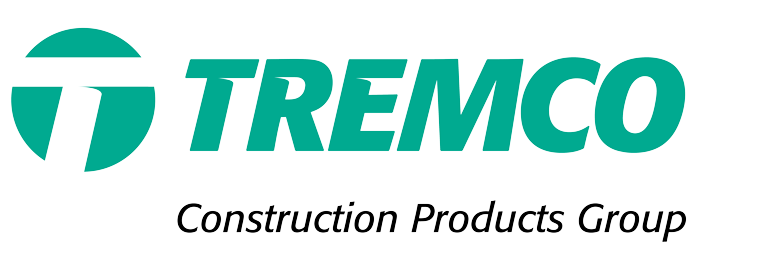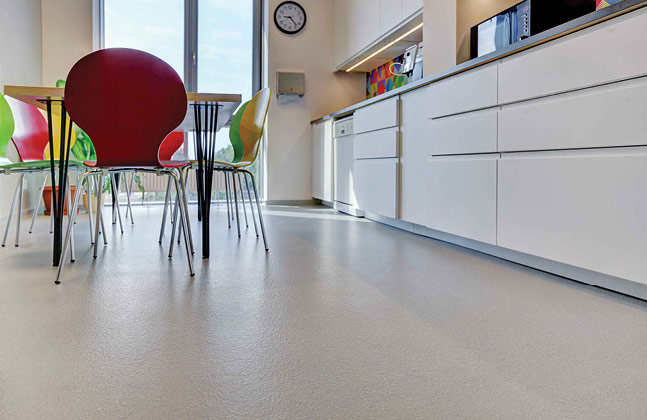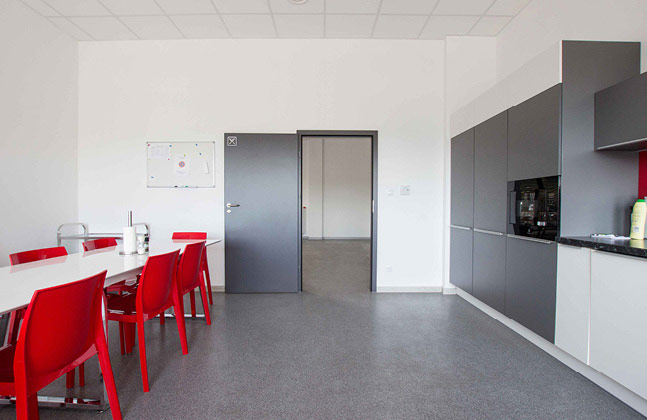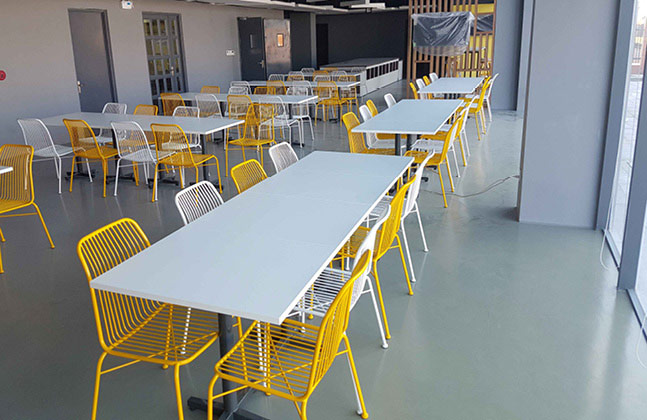Don’t Slip Up On Office Canteen Flooring
16 Oct 2018
Flooring in office canteens needs to be multi-functional to ensure that function meets aesthetics and provides a safe and hygienic space for staff to use on a daily basis.
When specifying the flooring for a canteen several factors must be considered, such as who will be using the space, what they will be using it for and what challenges the floor will face. For office canteens, it can be assumed that staff will be using the space to relax and eat lunch, so the floor is likely to face exposure to spilled food or drink, highlighting two properties that should be specified for the flooring - slip resistance and chemical resistance.
In any area where food or drink is consumed, there is a high chance of spillages and these spillages being cleaned with water. Both of these factors pose a slip risk to those using the space, which can lead to serious injury and even litigation if the facility is seen to be at fault. Therefore, it is important to install a floor with a slip resistance profile that’s up to the task at hand.
In many countries, the slip resistance of floors is measured using the pendulum test. This test is most often performed in situ on a level, finished floor in both wet and dry conditions. The test is designed to mimic when a pedestrian’s heel strikes a wet floor, as this is commonly when someone is likely to slip. The test will give a Pendulum Test Value (PTV), which will provide an accurate indication of how much slip resistance the floor will provide. The higher the number on the PVT scale then the more slip resistance the floor will provide.
For office canteen environments, it is advisable that the floor achieves between 30-40 PVT. However, it is important to ascertain what PVT the governing regulations stipulate must be met to ensure that the floor is legally compliant. In the UK, the Health & Safety Executive (HSE) expects a minimum of 36 PTV for a wet and horizontal floor – bearing in mind that just a splash of spilled coffee will suddenly make the floor wet enough to meet this criteria. Some manufacturers of flooring solutions also use the “R” slip resistance ratio defined in the German DIN 51130 standard (which is commonly adhered to in many countries). This is determined using ‘sensory’ (subjective) methods in the laboratory. During this test, a person must wear special shoes and move backwards and forwards on a floor that has been coated with oil. The surface of the floor is gradually inclined until the moving person starts to feel unsafe on the slippery surface. The angle of inclination determines the basis for calculating the R slip resistance ratio. A safe level of slip resistance in a canteen is equivalent to the R10 slip resistance ratio.
Epoxy resin floors and textured polyurethane systems fulfil these requirements well, and can also be specified to include coloured sand grains or flakes for decorative purposes. Examples of such flooring systems are Peran STB and Flowfast Quartz from Flowcrete.
For areas that are likely to experience increased exposure to spillages or more intense and regular cleaning the slip resistance should ideally be over 70 PTV or R12 on the anti-slip ratio. To achieve these high levels of slip resistance, epoxy floors with a highly textured surface, such as that of Flowfresh SR from Flowcrete can be specified.
Flowfresh SR is an antibacterial polyurethane concrete coating that contains natural quartz, providing a decorative and coloured finish. As well as being slip resistant, Flowfresh from Flowcrete is chemical resistant, meaning that natural acids and sugars from food, as well as the chemical cleaners used to clean them will not affect the floor’s finish. The Flowfresh range also contains Polygiene®, an antibacterial additive that can kill up to 99.9% of bacteria that comes into contact with the floor’s surface.
For areas where high levels of surface water are expected, drainage systems should be considered. The position of the drain will determine the direction and level of the floor’s pitch.
Ensuring that the flooring is chosen and applied in the correct manner reduces the chance of surface water. Stagnant surface water poses an increased slip risk, but can also harbour germs if it is not quickly and efficiently drained away, which is a serious health and safety concern. Bacteria thrive on damp conditions, and if this enters the air through evaporation, staff could breath in potentially dangerous bacterium and fall ill. Due to this, a flooring specialist should be consulted to ensure that the flooring complies with a functional drainage system.
Seamless resin floors have no joints for bacteria to hide in, meaning that bacteria can be washed away before it has time to multiply. To go one step further, coving can be specified to abolish the joint between the floor and the wall. This again reduces the hiding places for germs and bacteria, and also makes the space extremely easy to clean.
Getting the right floor is essential to guarantee the operational effectiveness of an office canteen, as well as the safety of the staff that use it. Get in touch with a member of Flowcrete’s expert team to learn more about specifying hygienic and safe solutions for your canteen.
ENDS
Enjoy this post? Click below to share it with your network:
Press Contact
For Flowcrete Asia’s contact details please visit www.flowcreteasia.com/contact-us or email asia@flowcrete.com.
Notes to Editors
Flowcrete is a world leader in the manufacture of seamless industrial and commercial resin floor, wall and coving solutions as well as other specialist coating technologies. Flowcrete Asia is now part of Tremco Construction Products Group.
Tremco Construction Products Group APAC has served as the benchmark for excellence and quality products since our first entry of our brands into the Asia Pacific market in 1984. Our commitment to serving our clients in a variety of areas with innovative and strategic technology products has allowed us to consistently grow for over 30 years. As of 2020, we have established a strong business presence in countries including Australia, Singapore, Malaysia, Indonesia, South Korea, Japan, Taiwan, China, Vietnam, Philippines, Myanmar and Thailand.
Tremco Construction Products Group APAC is a subsidiary of Tremco Inc. based in Cleveland, USA. Our product lines include high-performance silicone and urethane joint sealants, waterproofing membranes, drainage protection, air barrier systems, deck coatings, expansion joints, a full line of passive fire protection systems, and the industry’s only comprehensive line of glazing systems including silicone sealants, tapes, gaskets, and setting blocks. Tremco CPG APAC brands include Tremco, illbruck, Flowcrete, Vandex, Nullifire, Dryvit, Nudura and Euclid Chemical.
For further information please contact asia@tremcocpg.com
Or visit us on the web at www.tremcocpg-asiapacific.com




